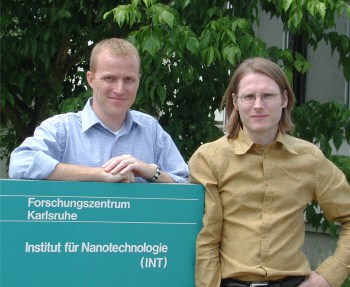When single-walled carbon nanotubes are made, a mixture of both metallic and semiconducting nanotubes is produced. Now, two researchers Ralph Krupke and Frank Hennrich at the FZK research centre in Karlsruhe and colleagues at Karlsruhe University have developed a technique based on electrophoresis that can extract the metallic nanotubes from such a mixture. The ability to separate nanotubes like this will be essential if devices made from nanotubes are to become a reality (R Krupke et al. 2003 Sciencexpress 1086534).

Single-walled carbon nanotubes have enormous potential as the building blocks in nanoscale electronics. Nanotubes are essentially rolled up sheets of graphite, and they can be metallic or semiconducting depending on the direction in which the sheet has been rolled up. Metallic tubes could function as nanoscale leads, and semiconducting tubes as nanoscale transistors. However, until now, no efficient separation techniques have been reported.
Krupke and Hennrich wired a microelectrode array, which provides a strongly inhomogeneous electric field, to a radio frequency generator and then applied a drop of solution containing the nanotube mixture to the electrodes. They observed that the metallic tubes were attracted towards the microelectrode array, while the semiconducting tubes remained in the solution.
The two types of nanotubes move in different directions along the electric field gradient because the semiconducting nanotubes have a smaller dielectric constant than that of the solvent, while the metallic nanotubes have a larger constant. Raman spectroscopy confirmed that separation had taken place.
The researchers say that their technique, which can remove metallic nanotubes with about 80% purity, “marks a major advance towards the realization of nanotube-based electronics”. They also believe that any applications of nanotubes that are based on optical properties – which are closely connected to electronic properties – could also benefit from the method. At present, the separation only works for small volumes, but the team hopes to upscale its experiment by using microfluidic techniques that are commonly used in biology.



